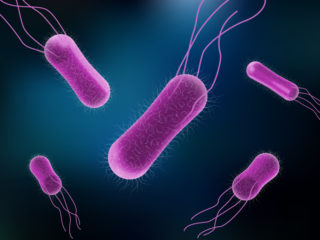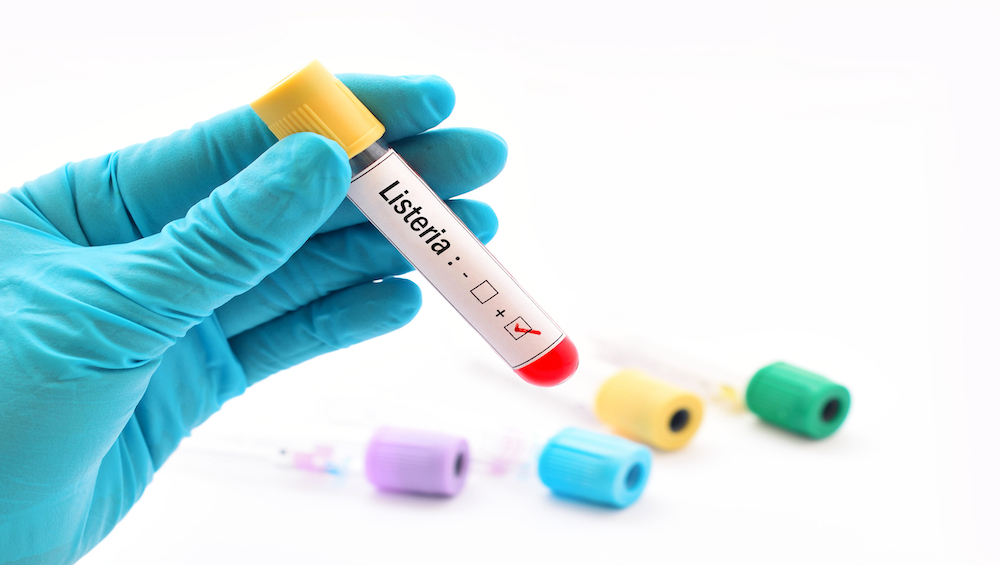The source of infection was not found for three of four Listeria outbreaks in England in 2018.
The one which was solved was an international outbreak that involved 12 cases in England from 2015 to 2018 and was traced to frozen sweetcorn and vegetables produced by Greenyard in Hungary.
The company found the cause of contamination, a persistent presence of Listeria monocytogenes in one of the freezing tunnels, and closed down this tunnel at the plant. In June 2019, the factory was sold to Roger & Roger, a producer of potato and corn snacks.
This multi-country incident included 54 clinical cases of listeriosis in Australia, Finland, Sweden, Denmark, Austria, and the UK with 10 deaths. The outbreak was detected in Finland using whole-genome sequencing (WGS).
Traceability information indicated that frozen corn was produced in Hungary and packed in Poland. It was found that people had eaten the frozen sweetcorn uncooked, although instructions on the packaging told consumers to cook it. Implicated frozen products were distributed to 116 countries.
The second incident involved four people with illness onset in 2017 and 2018. The third outbreak sickened three people and the final one had five reported cases all in 2018.
Increase in Listeria from 2017
In 2018, 156 cases of listeriosis were reported in England and Wales and 32 people died which was higher than the 135 infections in 2017 but otherwise the lowest total since 2011.
Most infections were in those older than 80, particularly in men aged 70 and over. Of the 18 cases in the 10 to 19 and 20 to 29 age groups, 17 were female and 14 were associated with pregnancy. Pregnancy-associated infections accounted for 26 of all reported cases and, where known, a third of these cases resulted in stillbirth or miscarriage.
Nearly a quarter of 130 non-pregnancy associated cases died. This represented a 2.7 percent decline in the proportion of reported deaths (n=45) compared to the preceding six years.
National surveillance of listeriosis in England and Wales is coordinated by the Gastrointestinal Infections team at Public Health England (PHE).
In England, the North East had the highest incidence rate whilst the East of England had the lowest. Wales reported five cases in 2018. July was the peak month for listeriosis reporting in 2018. Cases were infected with different strains of Listeria monocytogenes and no outbreaks influenced this peak. In 2016 and 2017 numbers peaked in October and July respectively.
Despite an increase in 2018, the number of cases remains low compared to previous years, according to PHE.
“As a predominantly foodborne infection, this severe disease is largely preventable. It remains imperative that sporadic cases of illness and clusters of the disease continue to be monitored and investigated to inform the continued risk assessment of the food chain.”
NRL work on Listeria and E. coli
Meanwhile, PHE experts were told of two Listeria and five Salmonella clusters in a 12 month period, according to a report.
 The UK’s National Reference Laboratory (NRL) for food microbiology is provided by PHE for the Food Standards Agency (FSA). The annual report of the NRL’s activities between April 2019 and March 2020 covers Listeria monocytogenes, coagulase-positive staphylococci, E. coli including STEC, Campylobacter, Salmonella and antimicrobial resistance.
The UK’s National Reference Laboratory (NRL) for food microbiology is provided by PHE for the Food Standards Agency (FSA). The annual report of the NRL’s activities between April 2019 and March 2020 covers Listeria monocytogenes, coagulase-positive staphylococci, E. coli including STEC, Campylobacter, Salmonella and antimicrobial resistance.
There were two Epidemic Intelligence Information System (EPIS) inquiries of Listeria monocytogenes clusters sent from the Listeria European Reference Laboratory (EURL) held by the French Agency for Food, Environmental and Occupational Health and Safety (ANSES). The NRL contacted PHE to respond to the EURL with the requested information. EPIS is a web-based platform that allows certain public health experts to assess whether current and emerging threats have a potential impact on Europe.
An FSA inquiry concerned a lab using an alternative method to ISO 11290-1 for Listeria detection; the NRL requested further details of the test and gave recommendations. Investigations were still ongoing at the time of the report.
The NRL received 14 outbreak alerts from the EURL for E. coli run by the Istituto Superiore di Sanità; nine from the United States, and five from individual EU countries.
Campylobacter and Salmonella
In July 2019, the Swedish National Veterinary Institute (SVA) as EURL for Campylobacter sent a questionnaire to all NRLs on implementation of the Process Hygiene Criteria (PHC), including sampling and methodological aspects. This was sent to FSA to refine answers and then collated information was submitted.
There were messages on five EPIS Salmonella clusters between April and March 2019 from the National Institute for Public Health and the Environment (RIVM) the EURL for Salmonella. RIVM also wrote to NRLs in March 2020 to ask whether Salmonella testing on poultry before slaughter was still being performed under Regulation (EU) No. 200/2012, as COVID-19 was causing many EU countries to lockdown and experience staff shortages.
In March this year, the EURL launched monitoring of Salmonella Mikawasima isolates in food, animals, animal feed, and the environment, to investigate the source of human cases. Due to COVID-19, there will be a delay in the UK reporting data.
The EURL for antimicrobial resistance, run by the National Food Institute, sent an urgent inquiry on behalf of ECDC and EFSA in January 2020 for NRLs to share WGS data on OXA-244 carbapenemase-producing E. coli from food, feed or animals to support an outbreak investigation.
In April 2019, it was decided to stop testing to detect Staphylococcus enterotoxin from all food and drink matrices from June of that year. Demand for toxin detection in coagulase-positive staphylococci in the UK is very low, with on average one request every two years. The UK NRL outsources this method to an NRL in the Netherlands when a request is received from an official control lab and is related to official control work.
From September 2019 the FSA requested NRLs do not attend any EU meetings, after a government statement in August. However, it was agreed individual experts could attend EURL meetings, as these are of public health importance for the UK.
(To sign up for a free subscription to Food Safety News, click here.)

